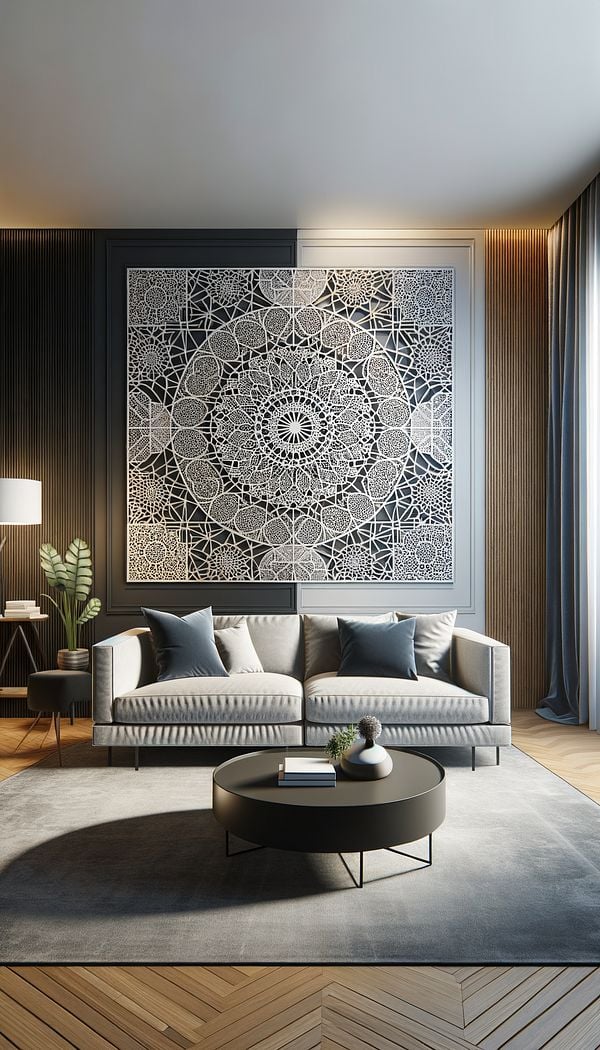What is Overlay?
Overlay in interior design refers to a decorative or functional layer added on top of another material or surface.
Description
In the realm of interior design, the term 'overlay' encompasses a wide variety of applications, from decorative flourish to functional enhancement. As a broad concept, it refers to any material or design element that is applied over another surface, material, or structure to enhance aesthetic appeal, introduce pattern or texture, or provide protection. This can range from a layer of paint or wallpaper to more intricate decorative panels, laser-cut screens, or even fabric coverings.
Overlays can be found across different elements of a room, including furniture, walls, floors, and accessories. Depending on the context, an overlay might serve a purely decorative purpose, such as adding visual interest to a piece of furniture or a wall, or it might have a functional role, like protecting a surface from wear and tear. In historical and traditional interiors, overlays often come in the forms of ornate woodwork, inlaid stone, or metalwork, showcasing craftsmanship and detail.
In contemporary design, overlays are used to introduce texture, pattern, and color, sometimes serving as a focal point in a minimalist setting. Modern technologies have expanded the possibilities of overlays, allowing for intricate designs and durable materials that can mimic a wide range of textures and appearances.
Usage
A common application of overlay in interior design is the use of patterned vinyl or laminates on plain cabinet fronts to refresh a kitchen's look. Another example is the addition of decorative panels or fretwork over windows or room dividers, enhancing privacy while adding an element of visual interest. In flooring, a protective overlay can help preserve the beauty and longevity of wood floors in high-traffic areas.
FAQs
-
Can overlays be applied to any type of surface?
Yes, overlays can be applied to a wide range of surfaces including wood, metal, glass, and fabric, depending on the material and technique used.
-
Are overlays permanent?
Overlays can be both permanent and temporary. The permanence of an overlay depends on the materials and methods used for its application.
-
How do overlays contribute to interior design?
Overlays can introduce new colors, patterns, and textures to a space, serve protective functions, or add a touch of personal style. They're versatile design tools that can transform interiors with relatively minimal effort and expense.
Practical Application
When considering using overlays in your design projects, think about the overall aesthetic you're aiming to achieve. For a cohesive look, ensure the overlay's pattern, color, and texture complement the existing interior elements. For temporary overlays, like decals or removable wallpaper, it's a low-commitment way to experiment with bold patterns or trends without long-term commitment. Always consider the durability of the material and the surface it's being applied to, especially for high-traffic areas or surfaces that undergo frequent use.
-
Furniture Types599 articles
-
Decorative Techniques322 articles
-
Decorating Principles & Elements330 articles
-
Materials & Textiles360 articles
-
Wall Treatments & Finishes157 articles
-
Slip MatchSlip match is a method used to arrange wood veneer sheets in a panel.
-
GreigeGreige is a color that blends gray and beige tones.
-
Block FrontBlock front refers to a furniture front design that protrudes in the middle section, creating a convex appearance.
-
SaturationSaturation refers to the intensity or purity of a color.
-
Gateleg TableA gateleg table is a type of folding table with legs that are hinged to swing out and support hinged leaves.
